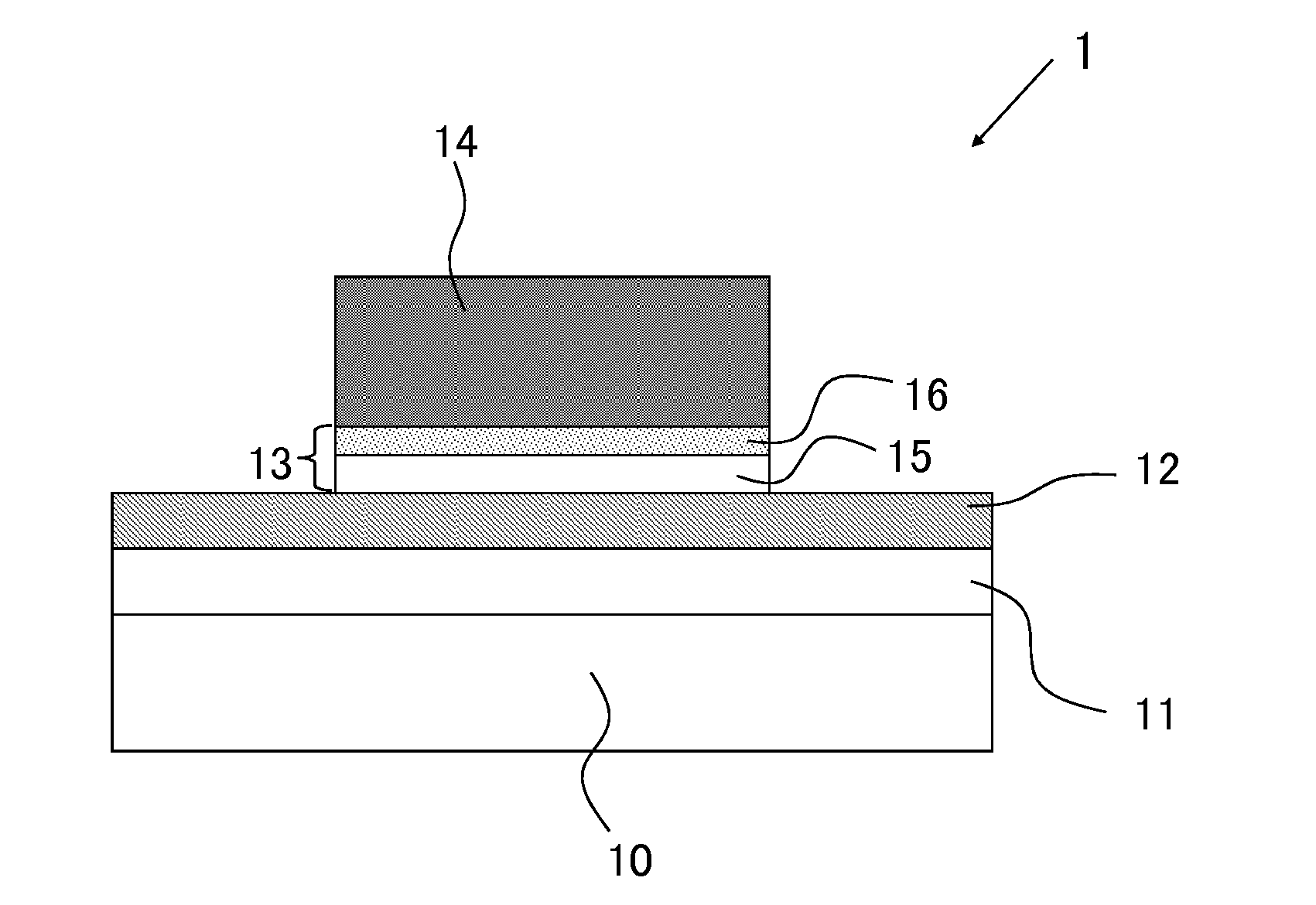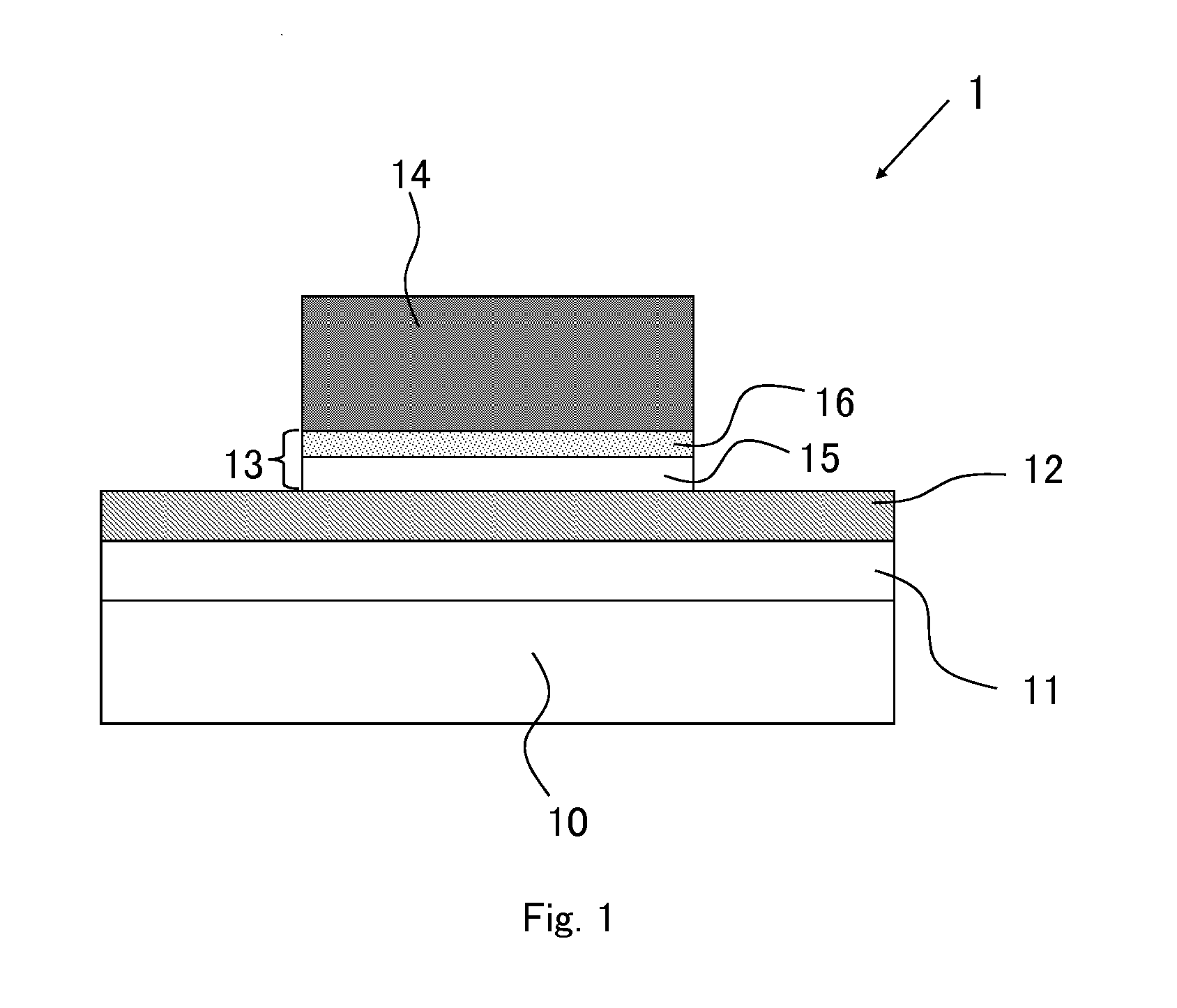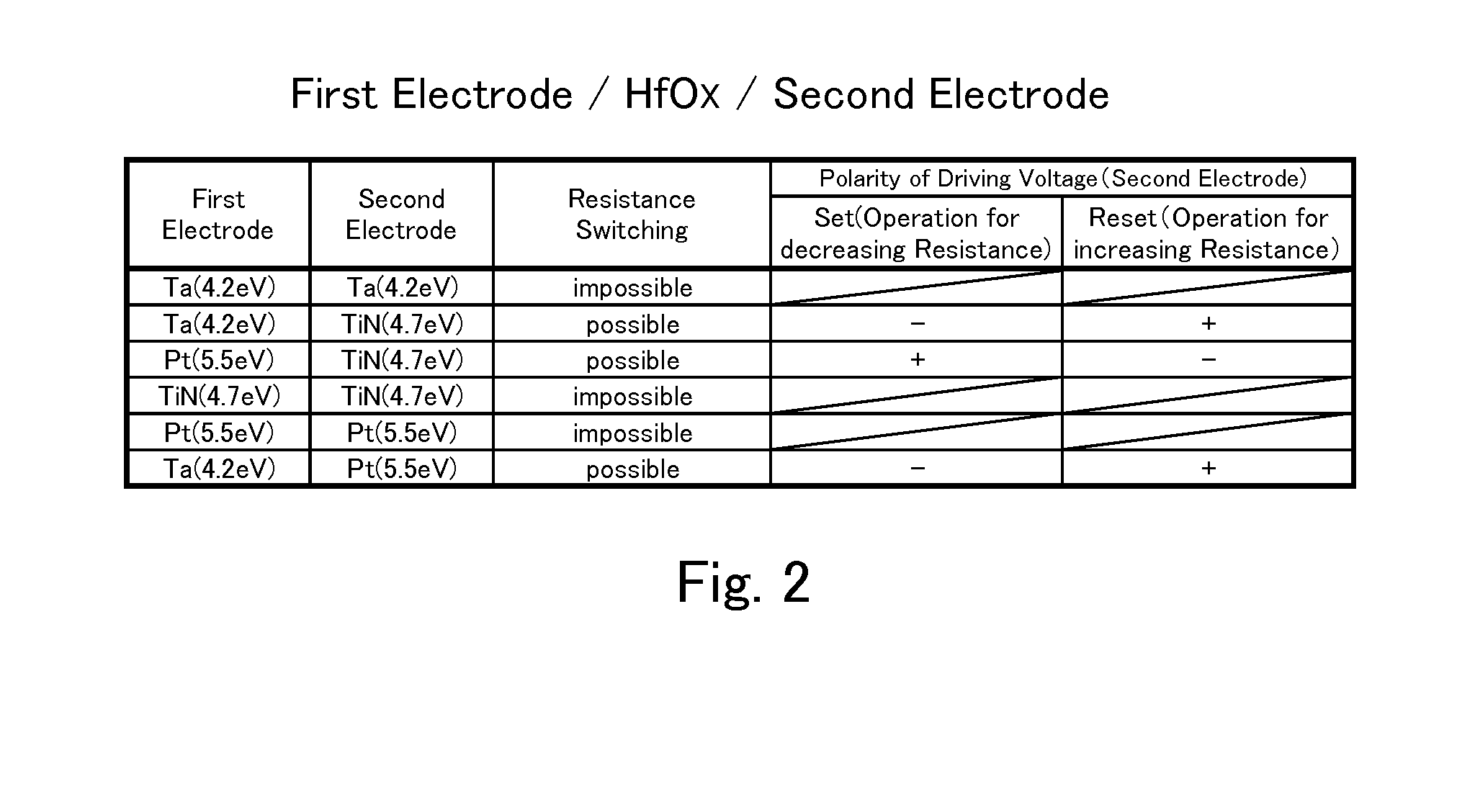Variable resistive element, and non-volatile semiconductor memory device
a resistive element and non-volatile technology, applied in the direction of bulk negative resistance effect devices, semiconductor devices, electrical appliances, etc., can solve the problems of difficult control of current influence, difficult to reduce the current required for switching to be less than about 10 a, and difficult to control the influence of current, etc., to achieve high work function, easy application, and large energy gap
- Summary
- Abstract
- Description
- Claims
- Application Information
AI Technical Summary
Benefits of technology
Problems solved by technology
Method used
Image
Examples
first embodiment
[0078]FIG. 1 is a sectional view schematically illustrating a structure of a variable resistive element 1 (hereinafter appropriately referred to as “present element 1”) according to one embodiment of the present invention.
[0079]In the drawings described below, essential parts are emphasized for the sake of convenience of description, and a dimensional ratio of each component of the element and an actual dimensional ratio do not agree with each other in some cases.
[0080]The variable resistive element 1 includes a second electrode (lower electrode) 12, a variable resistor 13, and a first electrode (upper electrode) 14, those of which are deposited and patterned in this order on an insulating film 11 formed on a substrate 10. The variable resistor 13 includes at least two layers which are a resistance change layer 15 and a high-oxygen layer 16, and each of which is made of a metal oxide film or a metal oxynitride film.
[0081]In the present embodiment, hafnium oxide (HfOX) that has a lar...
second embodiment
[0106]In the first embodiment described above, the present element 1 includes the resistance change layer 15 and the high-oxygen layer 16, these layers being made of the same metal oxide but having different oxygen defect concentration. However, the resistance change layer 15 and the high-oxygen layer 16 may be made of a different metal oxide. The resistance change of the variable resistive element appears since oxygen atoms are collected or diffused by the electric field near the interface between the electrode and the variable resistor. Therefore, it is more preferable that the high-oxygen layer 16 is made of a different oxide or oxynitride having free energy of formation of oxide higher than that of the oxide or oxynitride forming the resistance change layer 15. This structure facilitates the oxygen transfer from the high-oxygen layer 16 to the resistance change layer 15 during the reset operation, whereby the reset current, which is difficult to control only by the limitation of...
third embodiment
[0114]FIG. 8 illustrates a non-volatile semiconductor memory device using the present element 1 or 2 described above. FIG. 8 is a circuit block diagram illustrating a schematic configuration of a non-volatile semiconductor memory device 20 (hereinafter referred to as “present device 20” as needed) according to one embodiment of the present invention. As illustrated in FIG. 8, the present device 20 includes a memory cell array 21, a control circuit 22, a voltage generating circuit 23, a word-line decoder 24, a bit-line decoder 25, and a source-line decoder 26.
[0115]The memory cell array 21 includes a plurality of memory cells, each of which includes the variable resistive element R, in at least one of a row direction and a column direction in a matrix. The memory cells belonging to the same column are connected by a bit line extending in the column direction, and the memory cells belonging to the same row are connected by a word line extending in the row direction. The memory cell ar...
PUM
 Login to View More
Login to View More Abstract
Description
Claims
Application Information
 Login to View More
Login to View More - R&D
- Intellectual Property
- Life Sciences
- Materials
- Tech Scout
- Unparalleled Data Quality
- Higher Quality Content
- 60% Fewer Hallucinations
Browse by: Latest US Patents, China's latest patents, Technical Efficacy Thesaurus, Application Domain, Technology Topic, Popular Technical Reports.
© 2025 PatSnap. All rights reserved.Legal|Privacy policy|Modern Slavery Act Transparency Statement|Sitemap|About US| Contact US: help@patsnap.com



